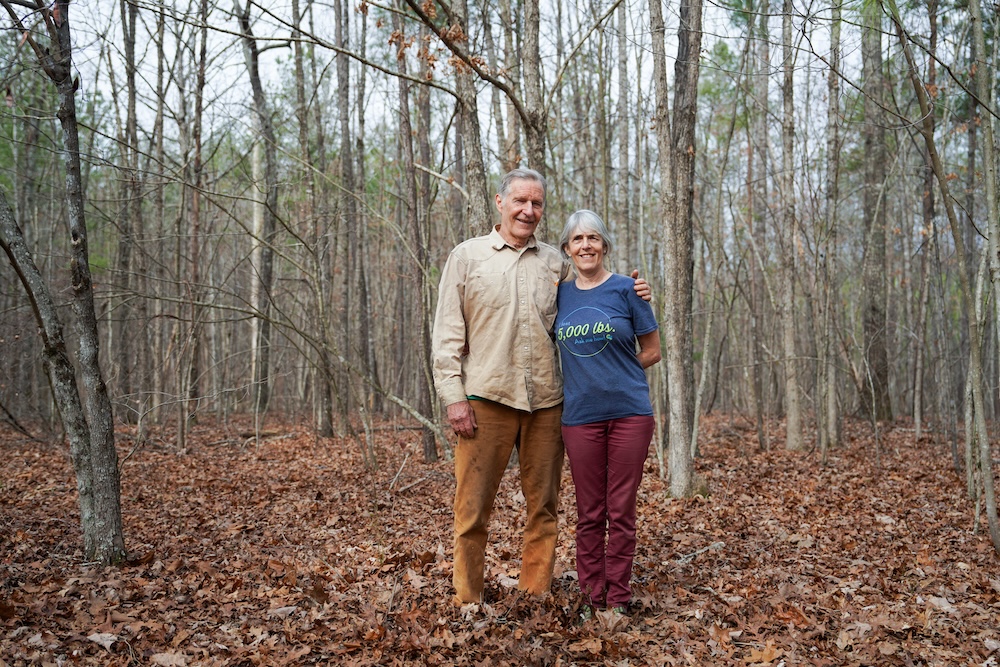Deep within the center of a former 1,200-acre monoculture pine plantation-turned-utility-scale solar project lies a donut hole of amazing, permanently protected natural hardwood forest. It exists because Christine and Bob Putnam took yet another of their many steps of fierce commitment to the environment and to Albemarle County by placing their 70 acres of forestland into a conservation easement with the Albemarle County Easement Authority last year.
Faith Schweikert
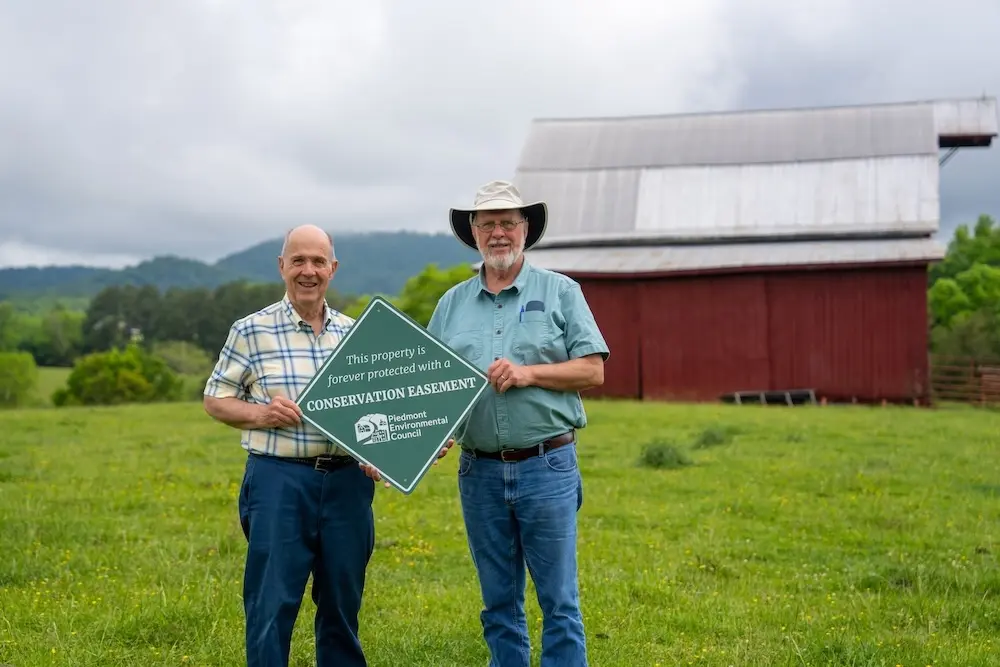
The Next Generation
For over 100 years, three generations of Goodalls have owned and worked to improve their land in Madison County, which now stands at 596 acres after enlarging the farm several times. Now, brothers Joe and Paul have fulfilled their parents’ final wishes to keep the land as a farm. In April, PEC used grants from the USDA’s Agricultural Land Easement program, the Virginia Land Conservation Foundation, and the Volgenau Foundation to purchase a conservation easement for $1.3 million, permanently protecting the farm for the next generation.
Winter Updates from Albemarle & Charlottesville
This text was taken from an email sent Jan. 30, 2025. Sign up for email alerts →
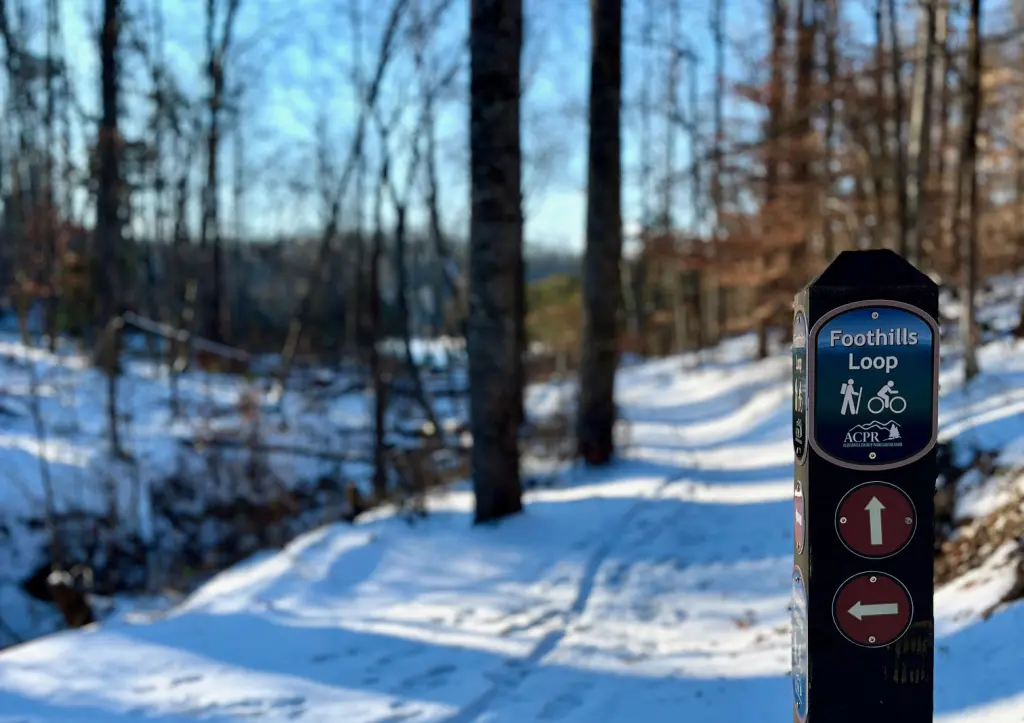
Dear Supporter,
In the last week, I’ve wandered around the County’s new Biscuit Run Park and advocated for data center reform in Virginia’s General Assembly Building in Richmond. Both feel like the right kind of places to spend a winter: enjoying easy-to-access nature and taking action on environmental issues that impact us all. Read on to learn about ways PEC has been working with community members to make Albemarle and Charlottesville better.
And if you’re interested in hearing about all of this directly from us, mark your calendars to join PEC’s Charlottesville staff for an Open House next Mon., Feb. 3 from 4 – 7 p.m. RSVP or swing by to hear about all the land use, conservation, and transportation and mobility work we’re working on this year.
Conservation: Impact of 2024 Conservation Easements in Albemarle
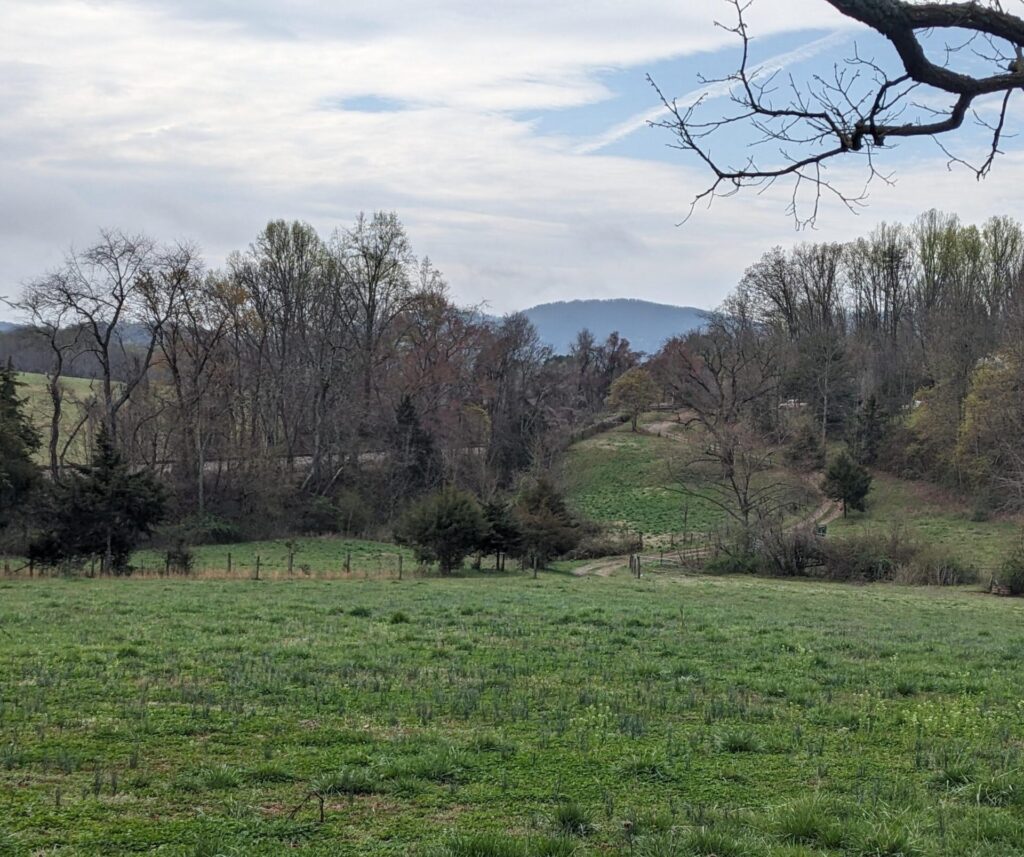
As an accredited land trust, PEC helps Virginia realize its conservation, climate, and biodiversity goals by partnering with landowners who wish to permanently protect their lands by placing a conservation easement on their property. In 2024, Albemarle County landowners protected 665 acres through conservation easements held by PEC, the Albemarle County Easement Authority and the 500 Year Forest Foundation.
Eighty-three percent of land in Virginia is privately owned, and these private lands contain irreplaceable waterways, prime agricultural soils, forest blocks, scenic viewsheds, historic resources and wildlife habitat. Locally, examples of this impact include over 500 miles of streams, 1,500 acres of wetlands, 76,00 acres of forests, and over 40,000 acres of prime farmland protected by conservation easements in Albemarle County alone.
Protecting these conservation values and a myriad of other public benefits that conserved lands give the community, such as climate and flood resiliency, is crucial. This is why we’ve been advocating for increased support for conservation programs in Albemarle County to advance more conservation locally and ensure that landowners of all income levels can participate.
Land Use: Albemarle Comprehensive Plan Update

The Albemarle Comprehensive Plan update process (AC44), which seeks to outline the vision for the County for the next 20 years, will soon wrap up discussion about land use decisions in the Rural Area, the Development Areas and the Growth Management Framework. The Board of Supervisors will hold a work session Wednesday, Feb. 12 on these topics, so we’ll share our comments with those signed up for our AC44 update emails beforehand. Throughout this process, PEC has continued to wave the flag for smart growth, access to nature, and protection of the rural areas for biodiversity, water supply and the rural economy.
Next topic up is Parks, Recreation, and Open Space. The Planning Commission will hold a work session Tuesday, Feb. 11, and a Board of Supervisors work session is scheduled for Wednesday, Feb. 19. As for all community topics, we encourage you to write to your supervisor if you have an opinion on parks, recreation and open space. County planning staff will continue to consolidate information as they work through the draft chapters before producing a draft document this summer.
Parks & Trails: Biscuit Run Park Opens to the Public

Two decades in the making, 1,190 acres of woodlands and meadows has opened to the public as the new Biscuit Run County Park. PEC had a direct hand in ensuring this land be publicly accessible green space and in pushing the project forward along the way. We’ll continue to be involved as we work toward:
- Connecting the park to Southwood via a new bridge and trailhead at Hickory Street
- Designing a greenway connection to future Monacan Nation Tribute Park
- Expediting walk & bike connections to the rest of the community, including the City of Charlottesville
This new park is located in the heart of the community. Its many offerings, including seclusion, diverse habitats, more than 8.5 miles of well-marked trails, and abundant fresh air, are now available to far more people within a walking, biking or a short drive’s distance. Its heritage trees, multiple streams, a pond with beavers, historic home sites and much more can now be part of people’s everyday lives.
At this year’s Charlottesville / Albemarle Mobility Summit, March 6 and 7, we’ll be celebrating this and continuing to work toward greater access to the outdoors, including launching the study of a path that extends from Charlottesville to the Afton Tunnel near Waynesboro.
Upcoming Events
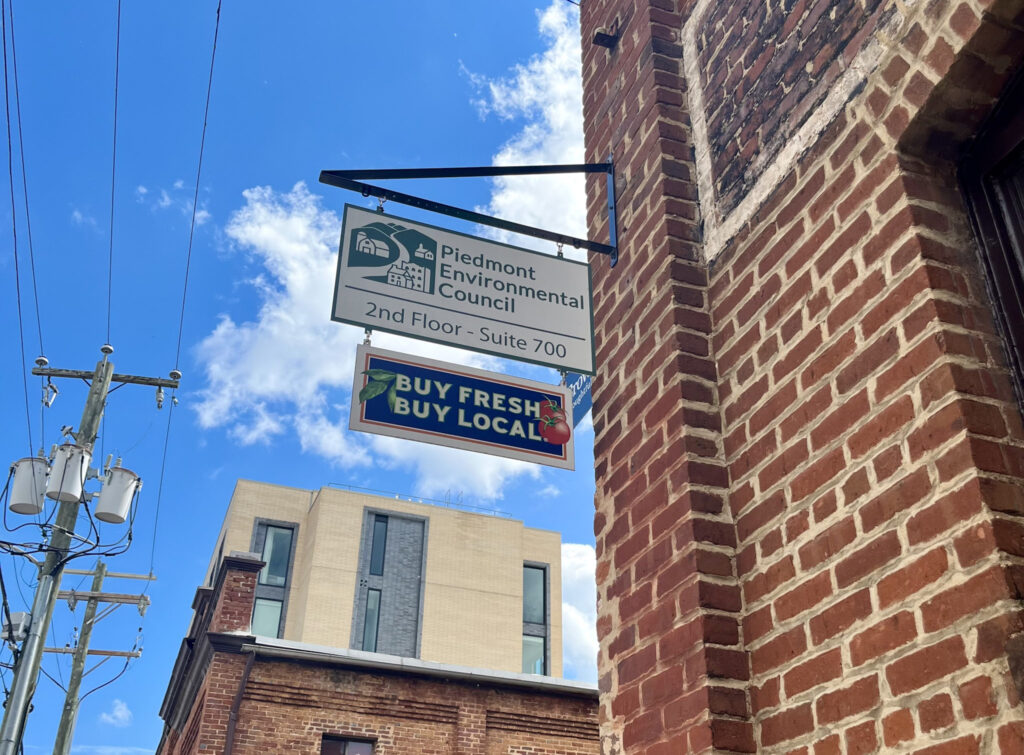
E-Bike Voucher Registration
Registration ends Friday, Jan. 31
E-Bikes could be game-changers as ways to get people out of cars, while dramatically reducing emissions, congestion, and parking. They transform cycling in some fundamental ways that are particularly important in our region, which is hilly with four very distinct seasons. To reduce barriers to entry, the City of Charlottesville is offering a $1,000 voucher for e-bike purchases. Register for several drawings throughout 2025. The first registration period will end this Friday, Jan. 31. Learn more at https://cvilleebike.com/
PEC’s Charlottesville Office Open House
Mon, Feb. 3, 4–7 p.m., 410 East Water Street #700
Come join us in celebrating the past year and learn about our work going forward. We’ll gather in community with drinks, light bites, and conversation about PEC, the community, and how we can all work together to make it better. Let us know you’re coming and stop by the King Building anytime that evening.
Charlottesville / Albemarle Active Mobility Summit
Two days! Thurs., Mar. 6, 5:30–8 p.m. + Fri., Mar. 7, 9 a.m.–noon,
The Wool Factory (1837 Broadway St.)
The fifth annual Charlottesville / Albemarle Active Mobility Summit invites cyclists, walkers, runners, and people interested in promoting active lifestyles for an evening of presentations, followed by morning work sessions. This year’s Summit will be the unofficial launch of the Three Notch’d Trail study — an 18-month process to determine the best route for a paved, shared-use path connecting Charlottesville to the Afton Tunnel and beyond.
You don’t need to attend both sessions to benefit, but it is encouraged. Both sessions will include snacks and drinks. The Mobility Summit is free but registration is required.
Lastly, these emails are meant to inform, to engage and to remind our members and readers that their participation can make a difference in issues that are important to them. In the midst of great change, local action matters. As always, we encourage you to get involved.
Hope to see you at the Open House next week,
Faith Schweikert
Communications Specialist
fschweikert@pecva.org
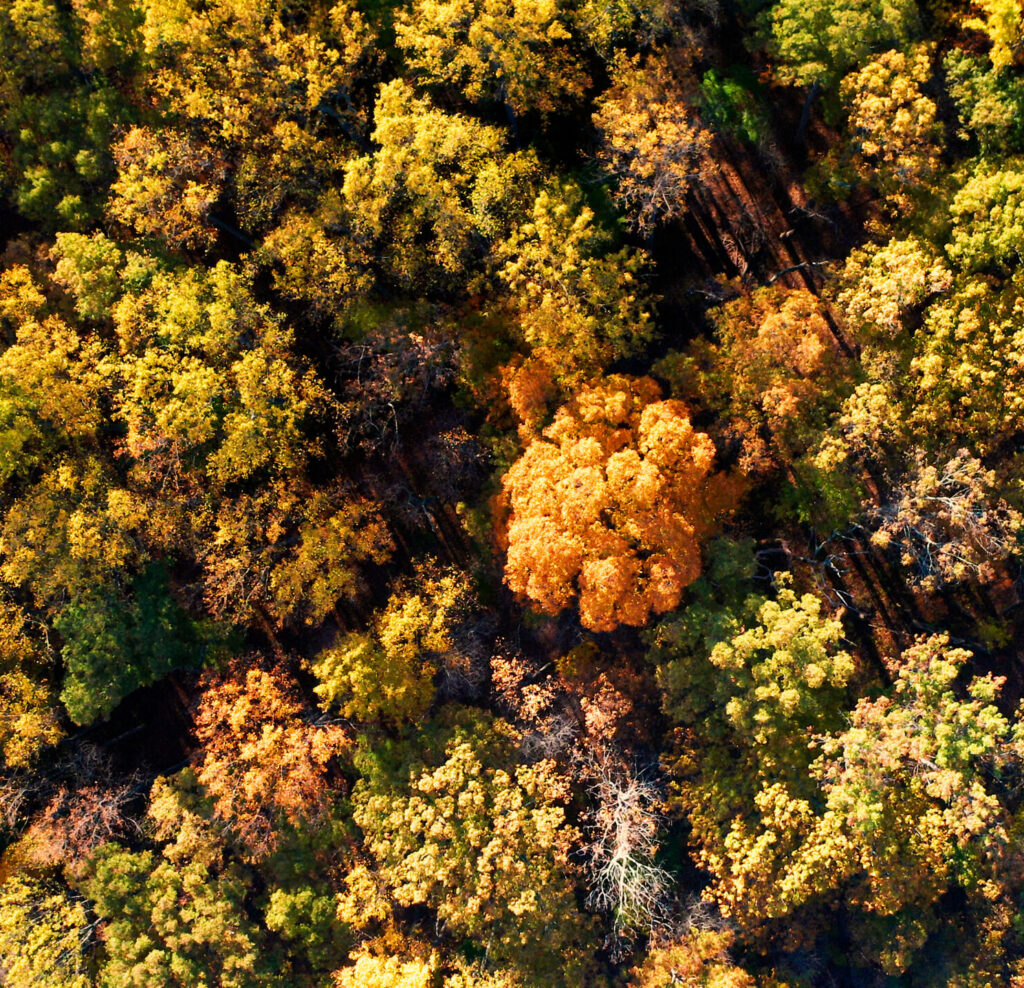
Fall Updates From Albemarle and Charlottesville
This text was taken from an email alert sent out on Sept. 26, 2024. Sign up for email alerts →

Dear Supporter,
There are so many ways one can engage with the environment in the Piedmont. Whether you’re interested in wildlife and habitat restoration, water issues, or connecting more people to the outdoors in parks and trails, read on for ways to get involved in making our community better.
And if you’re an Albemarle resident, make sure to check out the Oct. 30 All-CAC (Community Advocacy Committee) meeting on Albemarle’s Comprehensive Plan. The CACs are forums for resident input on Land Use issues within the County’s designated neighborhood areas. They’re a great way to follow what’s happening in the community and in this case, they will all be meeting together. It is a very strategic opportunity and you can be sure that we’ll be there waving the flag for smart growth, access to nature, and protection of the rural areas for biodiversity, water supply, and the rural economy.
Conservation: Establishing Habitat for Grassland Birds in Albemarle

Over 60 species of birds rely on Virginia’s grasslands through the year to nest, collect food or over-winter. But in the last century, grassland birds have experienced the sharpest population decrease of any bird group in North America. The Virginia Grassland Bird Initiative, a collaborative partnership between PEC, the American Farmland Trust, Quail Forever, and Virginia Working Landscapes, has been working creatively to bring that population back on managed agricultural lands.
One of the ways they’ve done this is by creating incentives for farmers to delay their haying or participate in summer pasture stockpiling, practices which give grassland birds a place to nest and mate in the grasses. This season ensured there were 1,527 acres of grassland, from 18 landowners and producers who applied for the program, available for grassland bird habitat. About 40% of that was in Albemarle County. Other landowners are beginning to adopt the practices voluntarily.
A stable habitat is required to support wildlife populations . And ensuring that habitat is there involves maintaining
existing open space, including both working landscapes and natural forestland. To do this, and achieve our community’s climate goals, we are advocating for increased support for conservation programs in AC44 by making it a catalyst project.
Applications for next season’s VGBI incentives program will open Oct. 1 for landowners/farmers interested in taking part in the incentives programs.
Land Use: Water Supply Planning to Address Climate Impacts
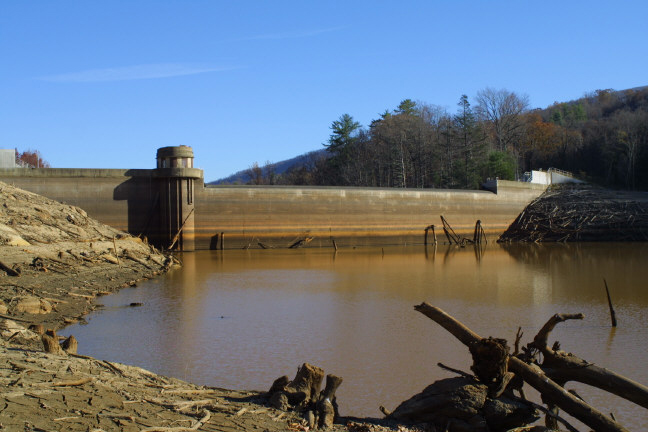
Clean drinking water is a fundamental human need. Our community, through the Rivanna Water and Sewer Authority (RWSA), has a long history of planning for water use to ensure that there is sufficient supply for the Charlottesville/Albemarle region. However, the water supply plan was largely spurred by the dramatic drought of record in 2001-2002.
It centered on fortifying Albemarle County, the City of Charlottesville, and Town of Scottsville water supply systems and accommodating projected growth of the urbanized development areas defined in the 2015 comprehensive plan.
Going forward, new legislation requires water supply planning to be more regionally cross-jurisdictional and be based on river basins. This brings Charlottesville and Albemarle into a region with Greene, Lousia, Fluvanna and Buckingham counties. It remains unclear what will result from cross-jurisdictional planning. PEC is currently requesting to serve as a formal stakeholder during the regional water supply planning process. Droughts and extreme weather events will be more frequent as climate change gets worse, and will have ripple effects beyond water supply systems. This is why PEC is proposing comprehensive groundwater monitoring programs be established for both Albemarle and Greene counties to inform decisions based on water availability in the future. View our Climate Action Report for more information →
Parks & Trails: Report Finds Residents Want More Trails
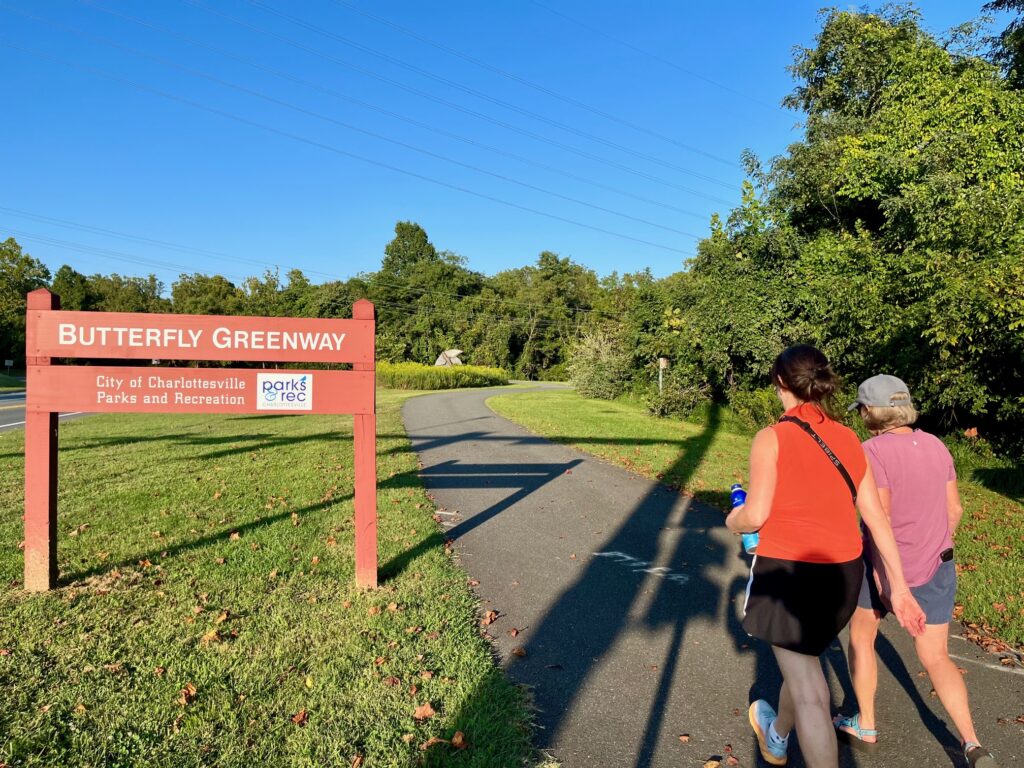
The City of Charlottesville has completed the first part of its new Parks Master Plan. This first phase was about understanding the recreational needs of Charlottesville residents. The preliminary results underline (emphatically) what we have been saying for years: Charlottesville residents want more trails, they want for existing trails to be better maintained, and they are willing to pay for them.
We will have more information as the plan develops. For now, here are a few tidbits that caught our eye:
- An astonishing 94% of residents have visited a local park in the last year (national benchmark = 76%).
- While residents clearly love the parks and trails, only 11% rate their upkeep as “excellent”, which is well below the 27% benchmark.
- The top nine priorities all relate to exploring the outdoors, with trails and access reflected in several different categories – all well above things like courts and ballfields (which we also love).
- Most residents (86%) are willing to pay for better parks. More than half would approve a $.01 property tax increase to pay for parks and a third would approve the maximum amount suggested ($.015).
- Not surprisingly, these findings track very closely with Albemarle County’s 2018 Recreational Needs Assessment – their most recent available. That report also found that County residents want more trails – specifically connective trails – and safe places to walk and bike. They too expressed willingness to pay higher taxes in order to have them.
- The results of both of these surveys are statistically and demographically sound and broadly reflective of area residents’ desires. They should not surprise anyone, as they reflect national trends which have solidified since the pandemic.
Peter just shared an update about one of his favorite local trails: a five-mile circulator greenway centered around McIntire Park that will serve both City and County residents by connecting Downtown with the Hydraulic and Rio areas. Peter and I will be leading an Advocacy Hike along that future greenway (which is already a lovely place to walk) on Sept. 28. (See below)
- You can learn more about the City Parks Master Plan here.
Upcoming Events
Loop de Ville 5-Mile Loop Advocacy Hike
Sun., Oct. 6, 9:30 – 11:30 a.m., McIntire Park
New date due to inclement weather!
PEC and partners have been advocating for a five-mile loop trail connecting McIntire and Greenbrier Parks, three schools, hundreds of businesses and thousands of residents for years. Now, it’s within reach! Join PEC’s Peter Krebs at 9:30 a.m. during Loop de Ville for a guided tour of the eventual multipurpose-path that will be a game-changer for community connection.
Loop de Ville: 20-Mile Hike / Bike / Run / Volunteer
Sun., Oct. 6, All Day, Starting and finishing at Rivanna River Company
New date due to inclement weather!
Celebrate National Public Lands Day by walking, biking or running the beloved 20-mile Rivanna Trail. There will be numerous hikes, walks, runs, and bike rides for people of all abilities — with guides and support along the way. Find PEC and our partners at the YMCA at our Cheer Zone Tent along the way.
Carbon & Conservation Workshop
Oct. 31st, 11:00-2:00 pm, Standardsville, Va.
Come learn about forest carbon, conservation easements, and other climate-smart conservation programs and opportunities are available to landowners at this free workshop. Lunch will be provided.
Albemarle Conservation Speed Dating Event
Nov. 1st, 1:00-4:00 pm, Bellair Farm
Join us for a hands-on workshop that will give you one-on-one time with local technical assistance providers and conservation practitioners to discuss your interests, options, and next steps specific to your property. All participants will receive a large-scale printed map of their property to use during the event and take home for reference.
Space is limited for this event. Please RSVP by emailing lmcshane@pecva.org.
Soft opening of Biscuit Run Park
Fall, 2024Two decades in the making, this 1,190 acres of woodlands and meadows will open as a County Park this fall. PEC had a direct hand in ensuring this land be publicly accessible green space and in pushing the project to completion. Stay tuned for more info about a soft opening this October and an official ceremony in November.
Lastly, these emails are meant to inform, to engage and to remind our members and readers that their participation can make a difference in issues that are important to them. So this election season, we encourage you to make a plan to vote. Early voting is available to all registered voters now through Nov. 2 at your local registrar’s office. You can check your voter registration status and learn more about voting in this year’s election at vote.elections.virginia.gov.
Faith Schweikert
Communications Specialist
fschweikert@pecva.org
(434) 977-2033 x7026

A Win/Win for Farmers
Mike Willis, his wife Judy, and stepson Wesley know that farming is not for the faint of heart.
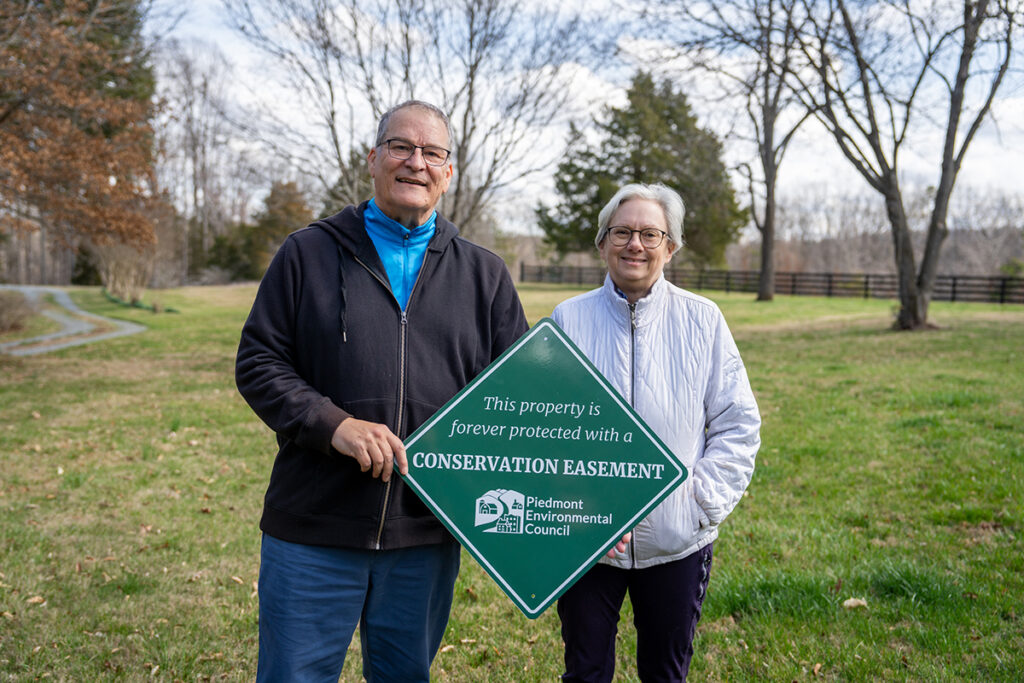
Partnership for the Ages
The Hellmanns are glad to know that their corner of the world will remain intact — a place where generations to come can enjoy the native wildflowers alongside Bear Trail, the hardwoods they plan to plant after the next pine harvest, and the great place to live that they have always loved by the creek.
Spring Updates From Albemarle and Charlottesville
PEC has been working to support conservation programs, engage with AC44 in Phase 3 and make the most of Bike Month this spring.
Strengthening Albemarle County’s Land Conservation Programs: Policy Platform
What are the County’s Land Conservation Programs?
The Albemarle County Easement Authority (ACEA) is a public body that holds open-space easements. An open-space (or conservation) easement is a voluntary legal agreement that limits development of rural land and permanently protects its natural and cultural resources.
The Acquisition of Conservation Easements (ACE) program is a purchase of development rights (PDR) program designed to provide a financial incentive for landowners of modest means to protect their farmland from future development.
What have the land conservation programs accomplished?
Key accomplishments of both the County’s land conservation programs as of 2023 include:
- Protecting over 31,000 acres of land and water in the Rural Area, including:
- >12,700 acres located within designated Water Supply Protection Areas;
- >21,000 acres of important agricultural soils;
- >5,300 acres within designated Mountain Protection Areas; and
- >8,800 acres within designated Rural Historic Districts.
- Eliminating the potential for over 2,100 Rural Area dwellings, reducing sprawl by directing future growth to the Development Areas.
Key accomplishments of the ACE program alone include:
- Leveraging over $3,000,000 in state grant funding to protect nearly 10,000 acres of 53 working farms;
- Incorporating a strong focus on equity, by providing financial support to landowners with the greatest need; and
- Protecting important Rural Area resources, including:
- ~5,000 acres of prime farm and forestland;
- 24 miles of buffered streams; and
- 5 miles of frontage on state designated Scenic Byways and county-designated Entrance Corridors.
How do the land conservation programs benefit our community?
Conservation easements provide significant public benefits to our community, including:
- Improving climate resiliency by retaining forest and farmland, helping to maintain carbon sequestration capability and mitigate the impacts of major flood events;
- Ensuring the quality and quantity of water resources for drinking, recreation, and habitat;
- Protecting public health and minimizing climate impacts from vehicle congestion and emissions associated with sprawl;
- Enhancing biodiversity conservation, by protecting natural habitat and ecological connectivity across the landscape;
- Supporting our local economy through production of local farm and forest products and tourism that relies on maintaining scenic and historic viewsheds; and
- Reducing expenditure of public funds by minimizing the demand for suburban infrastructure and services in the Rural Area.1
Direct support for conservation, such as through Albemarle’s purchase of development rights (PDR) Program, also provides a return on investment to our community. An economic analysis of the return on investment in land conservation in Virginia found that every public $1 invested in land conservation returned $4 in natural goods and services. 2 These dollars also support key industries that depend on the availability of high-quality land and water.
A recent summary by PEC of Albemarle County Community Surveys3 shows that the public recognizes these benefits and has expressed strong support and a commitment to land conservation, consistently identifying it as a priority over the past 30 years, including in the most recent AC44 survey from 2022.
A commitment to land conservation in Albemarle County, Timeline of survey attitudes from 1994-2022
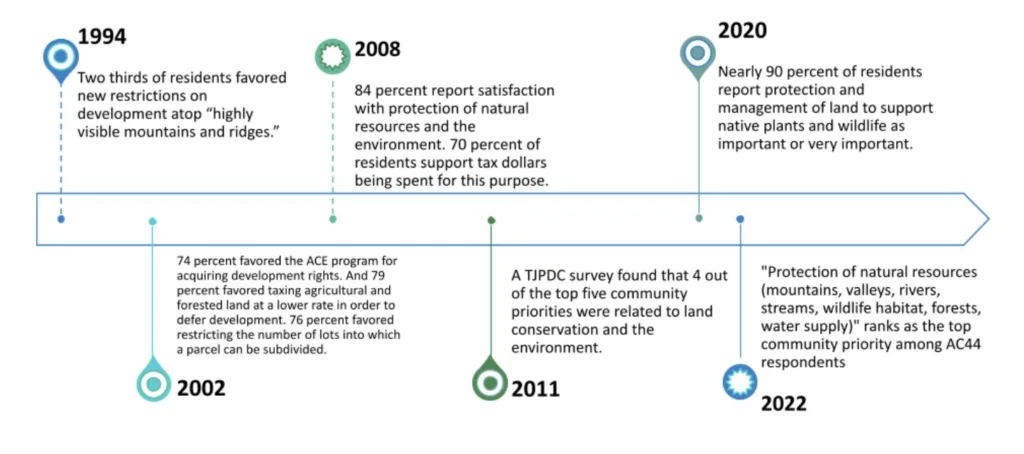
How does land conservation advance the County’s goals and priorities?
Land conservation programs directly support many of the County’s longstanding policies, goals, and priorities and are specifically recognized as an important tool in the County’s Comprehensive Plan, Biodiversity Action Plan, and Climate Action Plan. They are also essential for achieving the current vision of Albemarle as a ‘Green and Resilient Community’, one of the four major elements of the new Framework for an Equitable and Resilient Future guiding the AC44 Comprehensive Plan update.
The County’s current Comprehensive Plan, adopted in 2015, begins with its commitment to the overarching Growth Management Policy, which ‘directs development into specific, identified areas for vibrant growth while conserving the remainder of the County for rural uses, such as agriculture, forestry, and resource protection.’ The proposed AC44 update to the Growth Management Policy continues to support this approach, and states that “The Development Areas and the Rural Area will have distinct boundaries, without low-density transition areas”.
The current Comprehensive Plan also emphasizes protection of the Rural Area. The central goal of the Rural Area chapter states “Albemarle’s Rural Area will have thriving farms and forests, traditional crossroads communities, protected scenic areas, historic sites, and preserved natural resources.”
To achieve this goal, the Rural Area chapter includes numerous objectives and strategies, many of which the land conservation programs directly help accomplish. Included among these are several strategies directly related to maintaining and increasing support for the County’s own land conservation programs:
- Strategy 2b: Provide information to property owners in the Rural Area on alternatives to subdividing their land, including donating conservation easements and use value taxation.
- Strategy 2d: Continue to promote conservation easements to provide a financially attractive way for landowners to protect family farms in Albemarle County and their unique open space resources, to provide an opportunity for landowners to voluntarily sell a conservation easement to a public agency to be held in trust for perpetuity, and to preserve important features of the Rural Area for all.
- Strategy 2e: Strengthen the Acquisition of Conservation Easements (ACE) Program by providing a stable dedicated funding source and staff resources for administering the program.
- Strategy 2f: Continue to provide staff support to the Public Recreational Facility Authority (PRFA). (*renamed Albemarle County Easement Authority – ACEA)
The Natural Resources and Historic, Cultural, and Scenic Resources chapters also include numerous goals, objectives, and strategies related to the protection of water resources, riparian areas, biological diversity and ecological integrity, scenic resources, dark skies, and building climate resiliency, including:
- Strategy 5d: Encourage voluntary measures, such as conservation easements, agricultural and forestal districts, and use value taxation to protect mountain resources.
- Strategy 2a: Encourage landowners to pursue voluntary methods of preservation and conservation, including requesting landmark and district designations, offering conservation easements, and providing tax and other financial incentive programs, as outlined in the adopted 2000 Historic Preservation Plan and its updates.
The Climate Action Plan (CAP) and Biodiversity Action Plan (BAP) also include direct recommendations to increase land protection in the Rural Area through the County’s land conservation programs:
- L.1.1. Maintain and increase the County’s land-conservation programs and related efforts, with a focus on keeping large forested properties intact and in forested land cover, to protect and increase carbon sequestration, as well as to protect water quality and habitat. (CAP, noted as immediately actionable)
- L.1.13. Incentivize and support the protection, enhancement, and restoration of vegetated riparian buffers and wildlife habitat corridors for multiple benefits, including carbon sequestration. (CAP, noted as immediately actionable)
- GOAL 2: Promote conservation easements for areas of important biological resources or physical landscape conditions. (BAP)
- Recommendation 2.1. Promote the county’s ACE and PRFA conservation easement programs. Promote and support conservation easement programs of other organizations. (BAP)
The AC44 Comprehensive Plan update has several related draft goals and objectives for the Rural Area and Environmental Stewardship, all of which rely on the County’s land conservation programs for successful implementation:
- Rural Area Goal 1: Albemarle’s Rural Area will have thriving farms and working forests, traditional crossroads communities, and protected scenic areas, historic sites and districts, and natural systems, with a land-use pattern based on large parcels that are suitably sized for agricultural and silvicultural production and unfragmented habitats.
- Objective 1.1: Reduce the rate of conversion of Rural Area land to residential uses and mitigate the impacts to natural systems from the residential development that does occur.
- Objective 1.2: Improve the effectiveness of the County’s land-conservation programs in implementing Rural Area and Environmental Stewardship Comprehensive Plan objectives.
- Rural Area Goal 2: Albemarle County will have a strong agricultural and silvicultural economy in the Rural Area.
- Objective 2.2: Protect important soils for agriculture and forestry.
- Environmental Stewardship Goal 3: Albemarle County will have natural waters – including rivers, streams, wetlands, and groundwater – and riparian areas that are healthy, plentiful, diverse, and resilient and are able to provide the community with many benefits.
- Objective 3.1: Enhance protections and advance restoration practices for wetlands, streams, floodplains, and forested riparian buffers.
- Objective 3.2: Protect natural waters, stream channels, and riparian areas from unmanaged stormwater and other sources of pollution.
- Objective 3.3: Protect the quality and quantity of groundwater supplies throughout the county
- Environmental Stewardship Goal 4: Albemarle County will achieve better local biological diversity, ecological integrity, and ecosystem resilience, including by implementing the Biodiversity Action Plan.
- Objective 4.1: Protect and improve the network of native habitat blocks in the county, including forests, rock barrens, grasslands, and wetlands. The basis of this network is a pattern of large, well-connected forest blocks (with significant interior-forest area) that includes other types of native habitat patches.
- Objective 4.2: Conserve and restore forested habitat corridors and riparian buffers in the county, and remove barriers to wildlife movement, to improve habitat connectivity and to provide resilience for ecosystems and species affected by climate change.
- Objective 4.3: Protect and restore the quality and connectivity of river and stream habitats, and of wetlands, in the county. Restore more natural floodplain topography for both habitat improvement and flood-control benefits.
- Objective 4.4: Use land conservation tools to direct development away from priority areas identified in the Biodiversity Action Plan and from the Mountain Protection Areas, and to require appropriate management of important habitat areas that are protected by conservation easements.
Opportunities & Action Steps
Establish stability and consistency in the local land conservation programs.
Prior to the recession in 2008, the ACE program received annual funding from the General Funds and Tourism Funds. Post-recession reduction or elimination of these funds significantly reduced the program’s ability to acquire easements.8 During the COVID-19 pandemic, resources allocated to the ACE program were redirected and have not yet been restored. Staff capacity for both land conservation programs has consistently been limited and is particularly low now that the ACE program is unstaffed. This instability and general uncertainty about the program has resulted in missed opportunities. Establishing a consistent and dedicated funding source for the County’s land conservation programs would provide confidence for landowners to participate in the program and would greatly increase their effectiveness in addressing the County’s policy priorities.
Leverage state and federal funding to accelerate conservation and bring resources to our community.
State funding is available to support PDR programs through the Virginia Department of Agricultural and Consumer Services and for specific projects through the Virginia Outdoors Foundation and the Virginia Land Conservation Foundation, which has grown since the County initiated its programs. Numerous federal funding opportunities are also currently available for land conservation. To date, the ACE program has leveraged over $3,000,000 in state grant funding. However, without a PDR program in place, Albemarle County is currently not utilizing opportunities to leverage resources for conservation.
Improve the County’s fiscal health by increasing land conservation efforts in the Rural Area.
Numerous studies in Virginia show that land conservation has positive impacts on a locality’s fiscal health by reducing costs on infrastructure and other municipal services required by residential property owners.1,2, 4, 5,6 Research conducted in six Virginia counties shows that on average, residential lands require $1.18 in services for every $1.00 paid in local taxes. At the same time, working and open lands only require $0.35 in services for every dollar contributed in property taxes.1
Conservation easements, by lowering land values, also reduce a locality’s composite index, increasing the amount of state funding for education.5,7
Conservation easements do qualify land for a lower tax rate. However, most rural properties in agriculture and forestal uses are already enrolled in the use-value assessment program, so adding additional conservation easements will not significantly lower Albemarle’s tax revenue.
Achieve local goals and priorities by enhancing local conservation programs.
Other state and nonprofit land conservation programs do operate in Albemarle County, but they have limited capacity and/or tend to focus efforts on statewide priorities. A local program focused on local priorities is essential to accelerate the pace of land conservation in Albemarle County, and to focus those efforts on Albemarle’s goals as identified in the Comprehensive Plan, such as biodiversity conservation, climate action, and water resource protection, as well as continuing to ensure the focus on equity that has long been employed by the ACE program.
To act on these opportunities, PEC recommends the following action steps:
1. Restore the County’s purchase of development rights (PDR) Program. Establish a stable and dedicated funding source and allocate permanent staff resources for the program.
2. In addition to a dedicated funding source for the PDR program, establish an Albemarle Conservation Fund. The fund should be structured to receive payments from other sources, similar to the Conservation Easement Program Fund recently established by Culpeper County. This would allow Albemarle’s conservation programs the flexibility to receive additional support through other channels, including through siting agreements and mitigation payments to offset unavoidable impacts of major land use projects and loss of forest and farmland in the Rural Area.
3. Reestablish the County’s PDR Program with a newly updated approach, continuing to focus on farmland preservation, while also incorporating updates to better address the County’s goals for climate, biodiversity, and stream health, with a continued emphasis on equity.
4. Implement the two land conservation proposals designed as part of the Stream Health Initiative, both of which were endorsed by the BOS in a work session on December 1, 2021. These are proposal #6 (Land Conservation for Water Quality) and proposal #7 (Riparian Conservation Assistance Program).
Citations
- American Farmland Trust, Farmland Information Center. 2016. Fact Sheet: Cost of Community Services Studies. Washington D.C.
- Trust for Public Land. 2016. Virginia’s Return on Investment in Land Conservation. Accessed February 21, 2024. tpl.org
- Piedmont Environmental Council. 2023. Community Surveys in Albemarle County: Perspectives on Planning, Preservation, and Natural Resources from 1994 to 2023. Charlottesville, Virginia.
- Clower, Terry L., PhD and Dean D. Bellas, PhD. 2017. Socioeconomic impacts of conserved land on Virginia’s Eastern Shore. Report prepared for Virginia Coastal Zone Management Program (VZCMP) and Virginia Department of Environmental Quality (DEQ). Richmond, Virginia.
- Middle Peninsula Planning District Commission. 2010. Conservation Easements: Fiscal Impacts to Localities in the Middle Peninsula. Report prepared for Virginia Coastal Zone Management Program (VZCMP) and Virginia Department of Environmental Quality (DEQ). Richmond, Virginia.
- Rephan, Terance J. 2018. Clarke County, Virginia Cost of Community Services Study. Weldon Cooper Center for Public Service. University of Virginia, Charlottesville, Virginia.
- Piedmont Environmental Council. 2022. Impact of Land Under Conservation Easement on the Local Composite Index in Albemarle County. Charlottesville, Virginia.
- Albemarle County. 2021. Albemarle County’s Conservation Easement Programs. Presentation to the Albemarle Board of Supervisors on September 15, 2021.
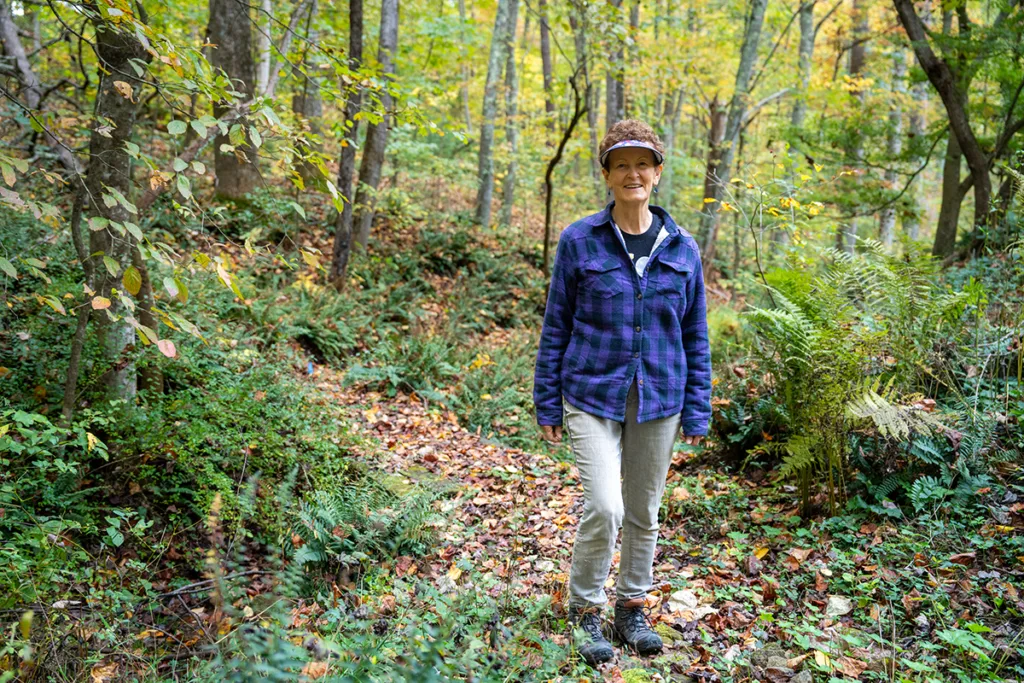
A Conservation Journey in Madison County
Carolyn Smith’s Madison County property has been on quite the journey since her parents first purchased the former cattle operation in 1965. Donating a 129-acre conservation easement in late 2023 came on the heels of decades of successful land stewardship by Carolyn, her parents, and a community of partners who have worked to restore and repair the land for wildlife habitat, pollinators and native plants.
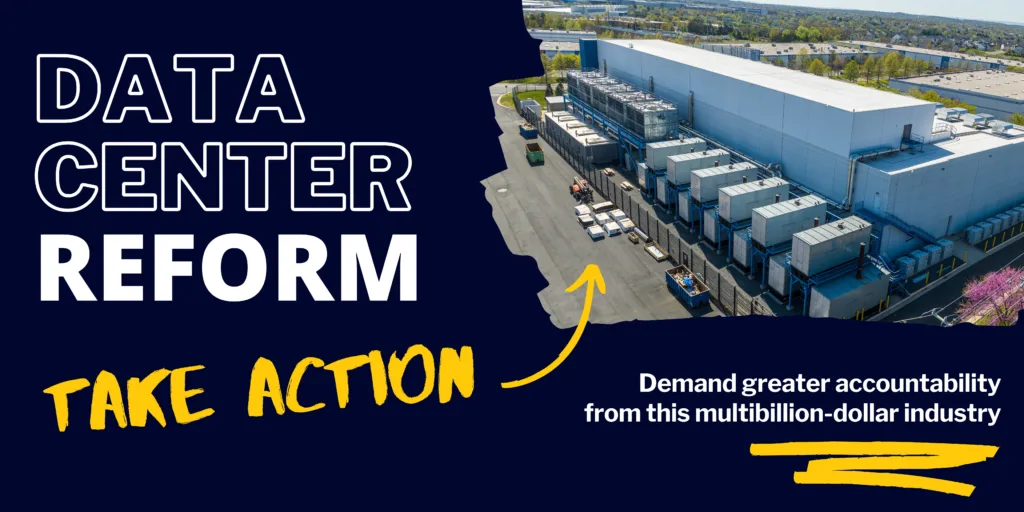
Join Us for a Community Meeting in Charlottesville
The following text was sent out via email on January 24, 2023. Sign up for PEC email alerts →
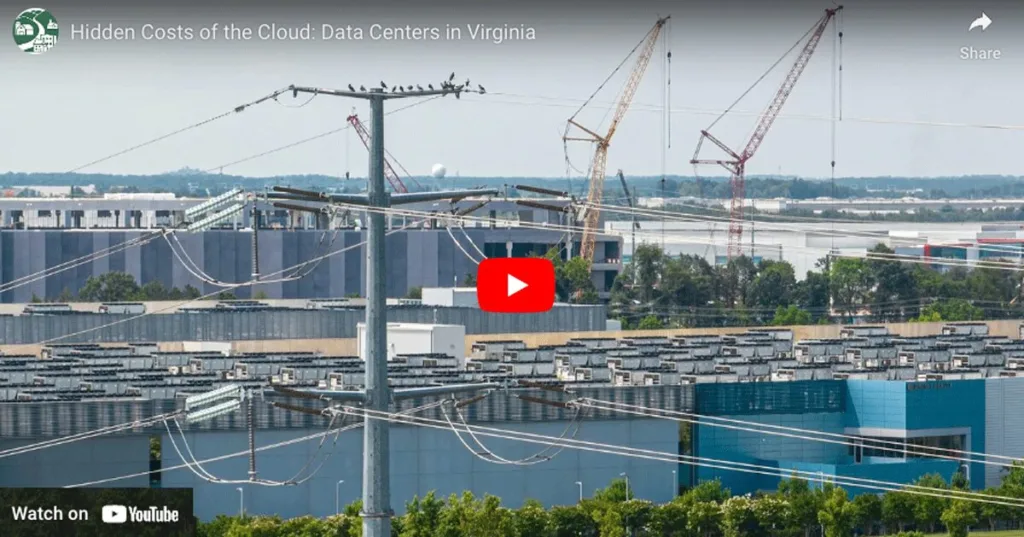
Dear Supporter,
You might have heard some of the recent buzz about data centers and surging electricity demand. We invite you to attend a community meeting to talk about potential impacts on our community and on the state’s ability to meet its climate goals Tuesday, February 6 at 6:30 p.m. at the Jefferson School African American Heritage Center in Charlottesville, Va.
The explosive growth of this energy-intensive sector, the only growing sector of electricity demand in Virginia, is requiring historic expansions of our energy grid and will thwart our ability to get off of fossil fuels – all of which will likely be funded by Virginia ratepayers like yourself.
We’ll also share what we’ve learned about the potential for new transmission line projects proposed in our area, especially the proposed “wreck and rebuild” expanded transmission line through Albemarle and Charlottesville (mapped below), as well as new power generation – and prolongation of dirty legacy sources – to supply the projected demand.
This sweeping project will cross through and impact scores of community neighborhoods and schools from Gordonsville and Charlottesville to Crozet and Waynesboro, parcels of permanently conserved land, the Historic Southwest Mountains, the Historic Greenwood-Afton area, Shenandoah National Park and Skyline Drive, several Albemarle County parks including McIntire and Darden Towe Parks, and the treasured views of the mountains throughout.
The unprecedented development proposed for our state will erase hard-won conservation and climate gains in Virginia, on top of the local impacts. We are working to develop solutions to this new challenge for Albemarle and beyond.
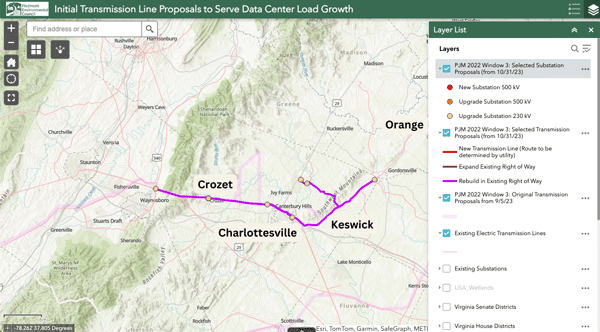
Space is limited, so please register in advance for this significant and timely conversation. I hope to see you there!
All the best,
Faith Schweikert
Communications & Policy Fellow
fschweikert@pecva.org
(434) 977-2033 x7026

